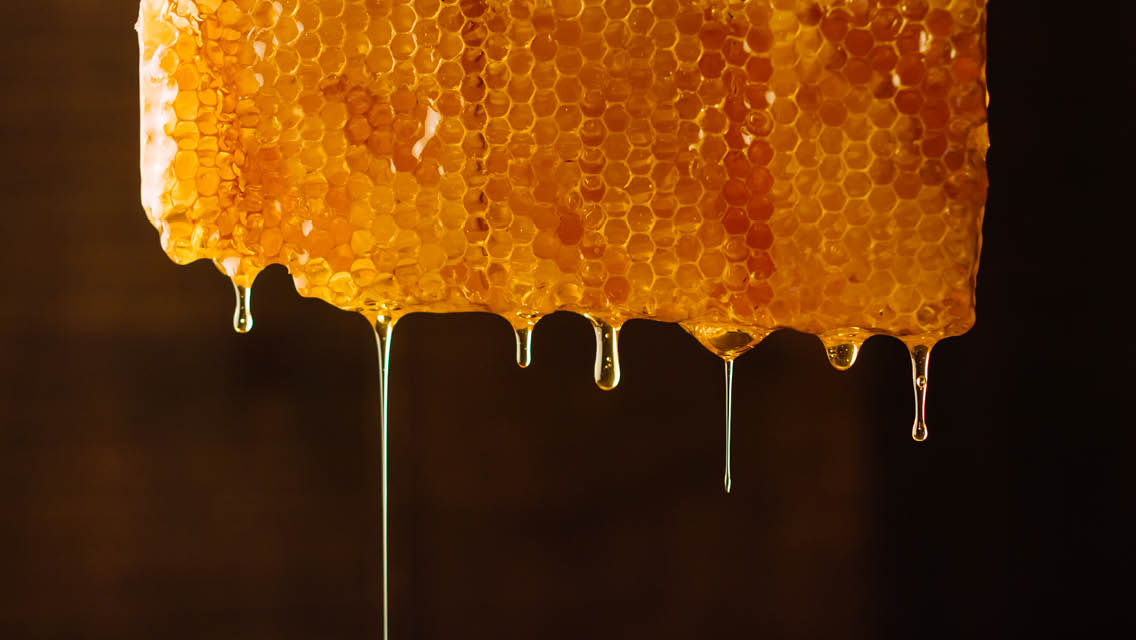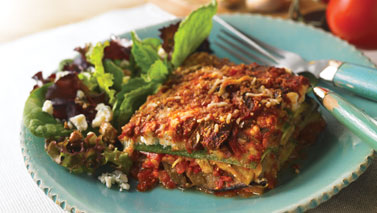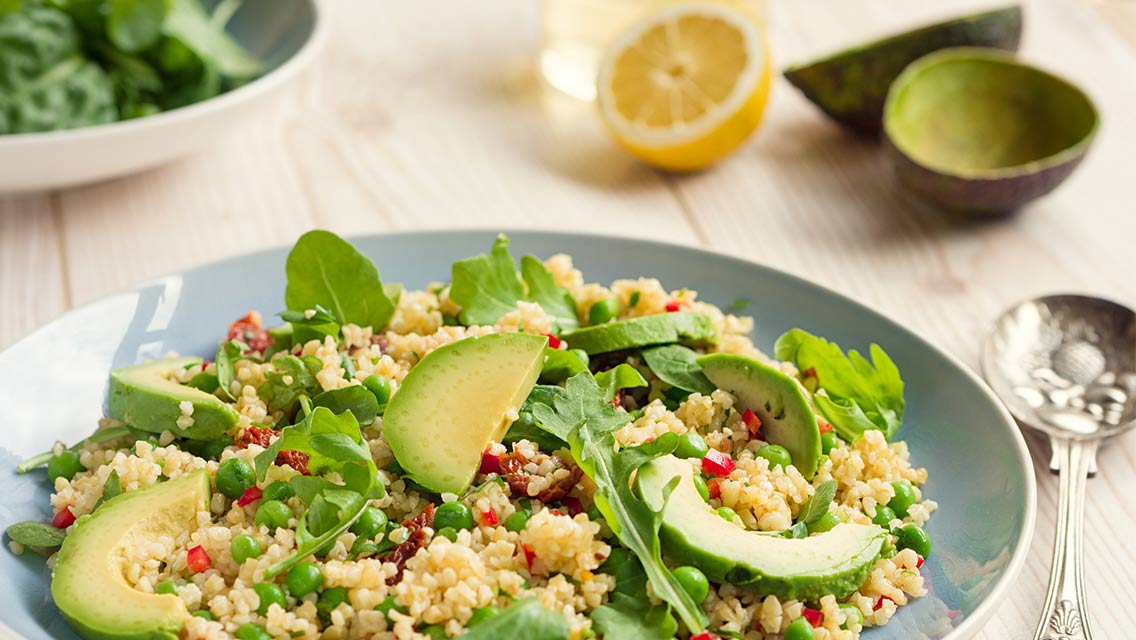When you purchase a tub of grated Parmesan at the supermarket, you expect to get cheese. Unfortunately, that’s not always the case. Some items on grocery shelves are not what they claim to be.
The U.S. Food and Drug Administration (FDA) calls this problem “economically motivated adulteration,” or food fraud, which occurs “when someone intentionally leaves out, takes out, or substitutes a valuable ingredient or part of a food.” It could simply be a food product that’s cut with other ingredients — like “honey” that’s mostly corn syrup.
Or it could be a substance masquerading as something healthier and more expensive — like cheap vegetable oil being sold as 100 percent extra-virgin olive oil (EVOO). It could also be a misleading label with words that could deceive an unsuspecting consumer, like “blend,” “fruit-flavored,” or “natural.”
“When consumers are ill-informed or they are faced with incomplete information, these substitutions become very easy, profitable choices to make, especially at a huge scale,” explains David Dellanave, an olive-oil importer based in Minneapolis.
Food is big business, of course, and companies are always looking to boost their bottom line. “The only reason people counterfeit food, adulterate food, and mislead consumers is to make a profit,” says Larry Olmsted, author of Real Food/Fake Food: Why You Don’t Know What You’re Eating and What You Can Do About It.
No one wants to waste money on fraudulent foods. Plus, food fraud can mean you’re also missing out on the benefits of healthier fare. “The real thing is more likely to have the naturally bioavailable nutrient forms and complementary polyphenols and micronutrients to most effectively nourish your body,” explains Samantha McKinney, RD, CPT, national program manager for nutrition and metabolism at Life Time. “And you’re more likely to know how your body will tolerate it.”
Food fraud affects up to 1 percent of the global food industry, according to independent expert estimates cited by the FDA — though it’s difficult to say just how often it occurs “because food fraud is designed to avoid detection.” Be especially mindful when shopping for the following five foods, so you can avoid the imposters and get real value for your money.
Coffee
Java offers a host of health benefits, including polyphenols. These powerful micronutrients can quell inflammation, protect against heart disease, and lower your risk of type 2 diabetes.
Coffee is also one of the world’s most commonly adulterated products, says Olmsted. Due to rising global demand — and the toll climate change is taking on production — some producers will cut ground coffee with filler ingredients to increase their profits. “You can’t tell whether that brown stuff is ground-up coffee, ground-up burned paper, or ground-up burnt twigs — all of which have been added to coffee over the years,” he cautions.
Finding Real Coffee
Olmsted recommends purchasing whole beans and grinding them at home to ensure your coffee is free of fillers. (Bonus: Grinding your own coffee has the added benefit of making a fresher, more delicious cup of joe.) If possible, purchase your beans from a brand you trust — or, even better, direct from your local roaster.
Extra-Virgin Olive Oil
Olive oil is one of the healthiest cooking oils, largely because it’s rich in monounsaturated fats and their anti-inflammatory and antioxidant properties. Unfortunately, it’s also a common target for food fraud, says Olmsted.
“Olive oil is easy to adulterate, and it’s difficult or impossible to test for authenticity,” explains Dellanave. The fake stuff is often diluted with cheaper oils, such as sunflower, canola, soybean, or hazelnut oil.
Finding Real Extra-Virgin Olive Oil
The best way to find the real deal is to learn from a trusted source what good olive oil tastes like. “If a retailer won’t let you taste test the oil, go somewhere else to buy it,” advises Dellanave. “The only reliable way to know that you’re getting olive oil is by knowing your source.”
Another option is to skip the imported stuff and look for the California Olive Oil Council seal. Olive growers in California, which produces approximately 99 percent of domestic olive oil, submit their product for chemical analysis and taste testing before getting the stamp of approval. (Get more EVOO tips at “How to Find Real Extra-Virgin Olive Oil.”)
Honey
Like other items on this list, honey contains powerful antioxidants and is both antibacterial and anti-inflammatory. But it’s easy to fall for imitation honey. “Because honey is a semitransparent, brownish liquid, it’s difficult to tell by looking at it whether or not it’s honey or corn syrup,” says Olmsted.
Indeed, some honey bottlers have diluted their product with rice syrup and other inexpensive sweeteners to increase profits — a process known as “honey laundering.” According to the Honey Authenticity Network, one-third of honey on the market is either adulterated or fake. Some beekeepers point out that adulterated products ultimately drive down prices for the real stuff, making it difficult for them to maintain their hives and their livelihoods.
Finding Real Honey
Because the best honey comes from beekeepers, shopping at a farmers’ market is a good way to find a connection. You can also look for local honey brands at your grocery store.
“Honey is one of the easiest products to buy from someone in your community,” Olmsted says. (For more on the health benefits of real, local honey, see “The Health Benefits of Real Honey.”)
Maple Syrup
Made from the sap of maple trees, maple syrup is mostly sucrose — but, because its glycemic load is lower than table sugar, it raises your blood sugar more slowly. It also contains essential minerals, including calcium, potassium, and manganese, making it a popular pick among health-conscious shoppers. But some folks could be duped by “pancake syrups,” which look similar but are usually made with corn syrup and artificial flavors.
Finding Real Maple Syrup
Inspect labels closely: Imposter syrups may say “maple breakfast syrup” or “pancake syrup.” Also, true maple syrup has only one ingredient: maple sap, which is boiled until it thickens to a syrupy consistency. “There’s no water or sugar added,” says Olmsted. “If you see anything else on the list, there’s a problem.”
Parmesan Cheese
True Parmigiano-Reggiano is a strictly regulated product, made of milk from dairy cows that graze pastures in specific provinces of Italy. It’s long-aged and carefully inspected before making it to the market.
But because U.S. trademark law applies only to the Italian name, most U.S. “Parmesan cheese” products adhere to no such standards.
This is particularly true of grated Parmesan, which is often cut with cheaper cheeses as well as with cellulose, a food additive that keeps the cheese from clumping in the container — and from melting properly when heated.
Finding Real Parmesan Cheese
Parmigiano-Reggiano that meets Italian standards will have the name stamped in pin dots on the rind. “If you’re buying a wedge, no matter how little cheese you’re buying, you should be able to see some of those dots,” Olmsted explains.
He warns against buying grated Parmesan, but if you must, look for “Parmigiano-Reggiano” on the label. If possible, pick a Parm that was grated and labeled at the grocery store, rather than a commercial product processed in a factory, to increase your chances of getting the good stuff.
This article originally appeared as “Keep It Real” in the January/February 2024 issue of Experience Life.





This Post Has 2 Comments
There was nothing of substance in this article!
Great information! Thank you!